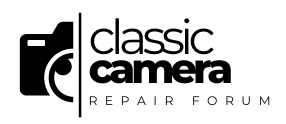Moderator: Hauslendale
Jun 19, 2020, 11:13 AM We are now officially co... by KYP-CPP
Moderator: Hauslendale
Moderator: Hauslendale
Jan 01, 2010, 08:30 PM Konica Auto S3 / Vivitar... by Reiner
Moderator: Hauslendale
May 04, 2025, 12:16 AM Kodak Retina Reflex S by Hauslendale
Moderator: Hauslendale
Jan 02, 2009, 07:44 AM Canon FD rear reassembly... by Odl
Moderator: Hauslendale
Moderator: Hauslendale
Jan 01, 2007, 07:00 PM Newbie by Rob_the_waste
Moderator: Hauslendale
Nov 04, 2006, 07:01 PM Olympus XA2 focus proble... by Chenard
Olympus XA2 focus problem...any repair tips? ELMO ST180 Gate Spring Query Nikon FE2 Help Ikoflex cocking lever problem Minolta Hi-Matic F Disassembly... Getting into the Ansco Memar Nikon EM needle/LED problem Agfa Isolette I Question Canon TX Question Pentax Program A/Program Plus mode dial (and modes!) Pentax Super A (Super Program) all locked up
Moderator: Hauslendale
Jan 04, 2005, 03:10 PM Spotmatic II wind proble... by Michael Tan
Moderator: Hauslendale
Jan 02, 2004, 10:46 PM Olympus shutter and mete... by Peter Frederick
45,598 Posts in 10,451 Topics by 8,518 Members
Latest Member: JeanPaul
Latest Post: "Kodak Retina Reflex S" (May 04, 2025, 12:16 AM)


